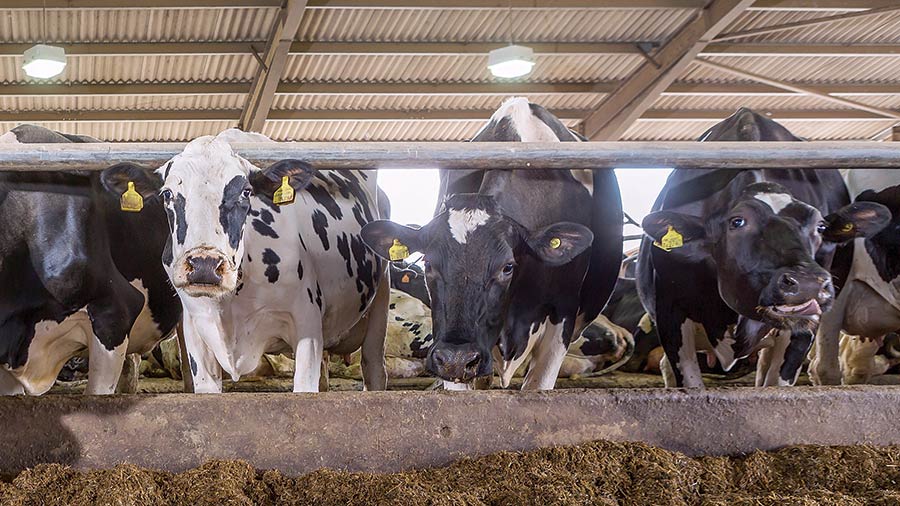How to use light exposure to improve milk production in cattle
 © Richard Stanton
© Richard Stanton The amount of light a cow is exposed to during a day is called the photoperiod, and it affects some of the hormones the cow produces: melatonin, insulin-like growth factor-1 (IGF-1) and prolactin.
By manipulating this to our advantage, we can encourage increased milk production in our cattle.
See also: 4 ways to breed your dairy cows to cut feed bills
About the author

Each month, we bring practical advice from an XLVets practice on a range of different subjects. This month, Katie Harrower of Fenton Vets explains how manipulating the amount of light cows receive affects their hormone production and how this can be used to best advantage.
Melatonin and IGF-1 influence the cow’s metabolism and the production of milk components. Prolactin has a direct effect on the udder, telling it to produce more milk.
Production can be manipulated by providing either a long or a short photoperiod. Different length photoperiods can be useful at different stages of production.
Long photoperiod for milking cows
A long photoperiod has 16 hours of light and eight hours of dark. This has a positive impact in lactating animals by boosting milk yields.
To achieve this, a level of 162-215 lux is required for periods of light; this should be even across all areas the cow has access to in this period.
More is not better in terms of photoperiod manipulation.
In fact, continuous light exposure has a suppressive effect on milk production, so for the effect to be successful it is important to stick to the ratio of light to dark described.
Short photoperiod for dry cows
A short photoperiod involves at least 12 hours of darkness, but ideally has eight hours of light and 16 hours of dark.
Short photoperiods seem to allow a “reset” for cows, enabling them to respond again to a long photoperiod in the next lactation. This effect is most likely to be caused by reducing levels of prolactin.
If this photoperiod is applied correctly to dry cows, it results in raised dry matter intakes in the dry period and increased milk yields in the next lactation.
Housing of dry cows to achieve these lighting ratios can be problematic in the summer, when natural day length is longer than the desired ratios.
Cows calving in winter will likely show a greater response to photoperiod manipulation.
This is because they will have naturally been exposed to the correct photoperiod as dry cows, as long as they are being housed separately from the milking herd.
How long does it take to work?
The effect can take two to four weeks to become apparent.
Some farms have seen milk yield increases of up to 10% when implementing photoperiod manipulation, predominantly in seasons where classically there would have been a dip in yields.
Putting it into practice
Implementing these strategies effectively will involve uninterrupted exposure of the cow to both the light and dark periods of the lighting programme.
In the light period, all areas the cow has access to should be well lit, including loafing areas, collecting yards and so on.
The opposite is true for the periods of desired darkness: there should be no points where the cow perceives it to be light in this period.
Use of low-intensity red lighting (7.5W bulbs) will enable staff to see in the “dark” periods without affecting the programme.
Cows do not perceive this type of light as daylight, so it does not cause any of the hormonal changes involved in photoperiod manipulation and allows staff to operate safely and effectively.
Talk to your vet if you are interested in how light manipulation can improve productivity in your herd.
